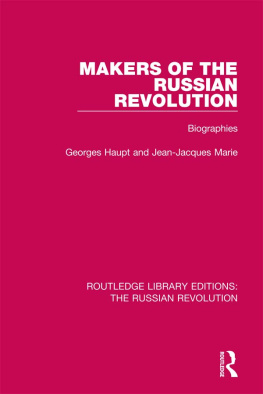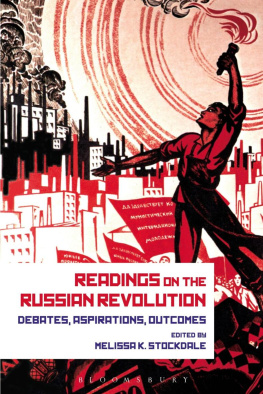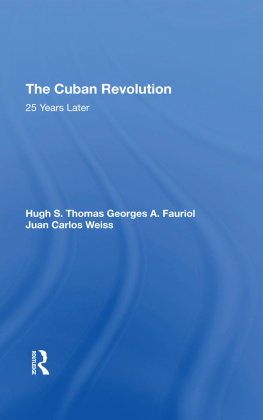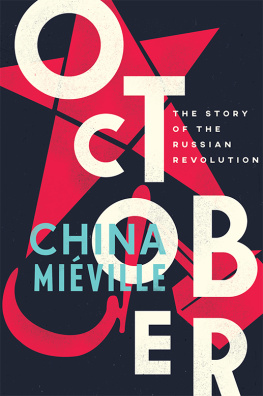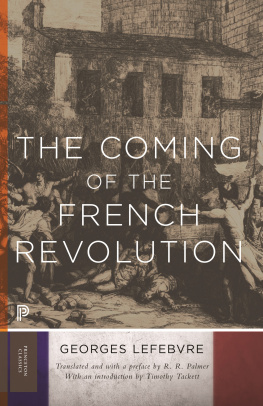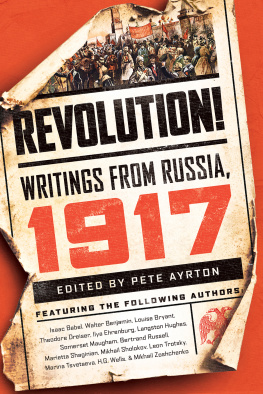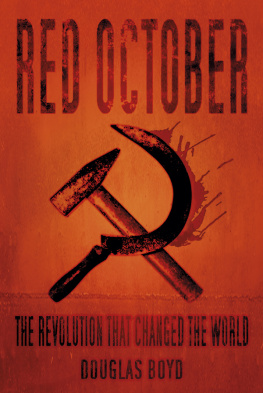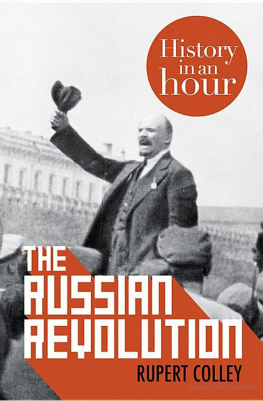Contents
Guide
Print Page Numbers
ROUTLEDGE LIBRARY EDITIONS: THE RUSSIAN REVOLUTION
Volume 4
MAKERS OF THE RUSSIAN REVOLUTION
MAKERS OF THE RUSSIAN REVOLUTION
Biographies
GEORGES HAUPT AND JEAN-JACQUES MARIE
Translated from the Russian by C.I.P. Ferdinand
Commentaries translated from the French by D.M. Bellos

First published in English in 1974 by George Allen & Unwin Ltd
This edition first published in 2017
by Routledge
2 Park Square, Milton Park, Abingdon, Oxon OX14 4RN
and by Routledge
711 Third Avenue, New York, NY 10017
Routledge is an imprint of the Taylor & Francis Group, an informa business
This translation 1974 George Allen & Unwin Ltd
All rights reserved. No part of this book may be reprinted or reproduced or utilised in any form or by any electronic, mechanical, or other means, now known or hereafter invented, including photocopying and recording, or in any information storage or retrieval system, without permission in writing from the publishers.
Trademarknotice: Product or corporate names may be trademarks or registered trademarks, and are used only for identification and explanation without intent to infringe.
British Library Cataloguing in Publication Data
A catalogue record for this book is available from the British Library
ISBN: 978-1-138-21999-1 (Set)
ISBN: 978-1-315-31269-9 (Set) (ebk)
ISBN: 978-1-138-22530-5 (Volume 4) (hbk)
ISBN: 978-1-315-40022-8 (Volume 4) (ebk)
Publishers Note
The publisher has gone to great lengths to ensure the quality of this reprint but points out that some imperfections in the original copies may be apparent.
Disclaimer
The publisher has made every effort to trace copyright holders and would welcome correspondence from those they have been unable to trace.
MAKERS OF THE RUSSIAN REVOLUTION
Biographies of Bolshevik leaders by Georges Haupt and Jean-Jacques Marie
Translated from the Russian
by C. I. P. Ferdinand
Commentaries translated from the French
by D. M. Bellos
London George Allen & Unwin Ltd
Ruskin House Museum Street
First published in 1974
This book is copyright under the Berne Convention. All rights are reserved. Apart from any fair dealing for the purpose of private study, research, criticism or review, as permitted under the Copyright Act, 1956, no part of this publication may be reproduced, stored in a retrieval system, or transmitted, in any form or by any means, electronic, electrical, chemical, mechanical, optical, photocopying, recording or otherwise, without the prior permission of the copyright owner. Enquiries should be addressed to the publishers.
This translation George Allen & Unwin Ltd 1974
ISBN 0 04 947021 3
Translated from the French
Les Bolchviks par eux-mmes
Librairie Franois Maspro 1969
As the original French title of this work (Les Bolchviks par eux-mmes) was meant to suggest, the documents themselves form the major part of the text. Selecting which documents to include was a difficult but challenging task. The main difficulty was that the dimensions of this book obliged us to limit ourselves to a small number of characters.
The first and essential criterion of selection we used was the importance of the role played by the character in the Russian Revolution. We do not restrict the term revolution to mean only the year 1917, but consider it to cover a whole process which started well before the birth of Bolshevism and continued through the early years of Soviet power. Thus we have included not only members of the political general staff of the Bolshevik movement in 1917 and the military leaders of the October uprisings, but also men who were in the foreground during the Civil War, in the building of the Soviet State and in the internal struggles of the Party. Thus Bogdanov has his place in this volume, for although he retired from the political scene in 1913, he was important in the history of Bolshevism as the leader of a whole group of dissidents who joined the Party in 1917 and formed a considerable contingent of its general staff; for the same reason we have included Kirov, a minor militant in 1917 who became a figure of the first importance as Stalins team became established in the 1920s.
The second criterion which flows naturally from the first was that of political representativeness. The third criterion was, where possible, to use original documents, that is autobiographies, rather than other sources. The three criteria of selection, taken together, account, for example, for the inclusion of Stasova and the exclusion of Lashevich and Lutovinov.
A second problem was the manner in which the documents were to be presented. Our aim was not to compose a biographical dictionary. Therefore we decided, out of the many possible ways of grouping the documents, on that which seemed least bad. We rejected classification by membership of the various post-revolutionary splinter groups and tendencies, particularly since neither the groups nor their members were very fixed. Bukharin is a case in pointa left-wing communist until 1919, and then leader of the right from 1924. The same problems occur in attempting to classify these documents by the occupations or achievements of their authors, using categories such as political leaders, Party men, theoreticians, military chiefs, etc., since each in fact took on, in turn and according to circumstances, extremely diverse tasks and positions.
The classification adopted in the end derives from our introductory essay: considering 1917 as a point of arrival, not as a starting-point, we have taken as our framework the political origins and allegiances to pre-revolutionary splinter groups of the selected militants.
The presentation of this material involved some technical problems which call for comment. Though we hope to have obeyed the rules of historical science, we intended to provide not a work of scholarship but a book that could be useful to anyone who might wish to have reliable documentation on the Bolsheviks and the 1917 Revolution. Footnotes seemed inadequate to this task, and we have therefore employed a different technique. Each biographical document is followed by a more or less lengthy note, in which we have sought to correct whatever errors there may be in the text, be they involuntary omissions or deliberate distortions, and to draw a portrait of the character concernedand especially to sketch in his life after the composition of the autobiography. We have used numerous sources for these complementary notes, but provide no bibliography of them.
We are well aware that these notes are incomplete and may contain errors: Soviet archives are to this day almost totally inaccessible. Many of the victims of the purges are still Unpersons, on whom it is extremely difficult to obtain information. To fill these gaps, researchers often have recourse to second-hand sources: there is a great body of erroneous, not to say fabricated, information of that currency. We have tried, not always successfully, to avoid falling into this trap. Lack of fact, as well as the desire to make these notes more readable, accounts for the anecdotes in our commentaries.

